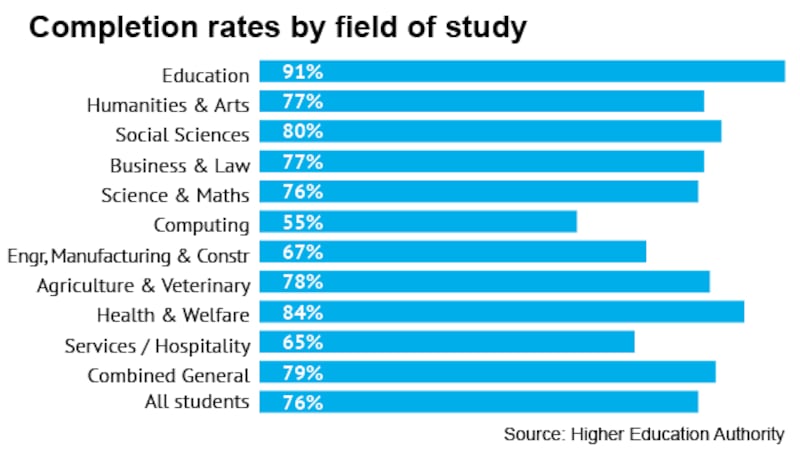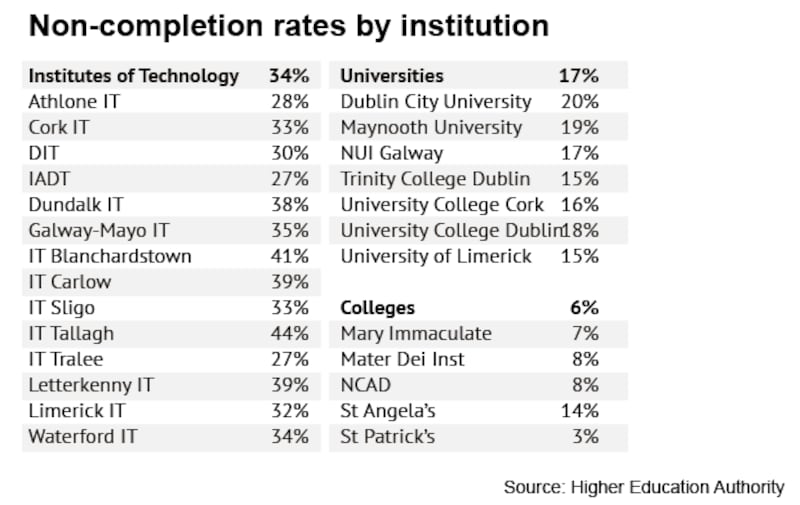Are we setting the bar too low for entry into some of our higher education courses?
It's a question begged by the findings of a major study by the Higher Education Authority (HEA) into the volume of students who are failing to complete third-level courses.
The good news is that, overall, most students (76 per cent) are completing their courses in higher education.
These figures, according to education authorities, compare well to other jurisdictions, especially given that we have one of the highest rates of third-level participation in the world.
The proportion of our school-leavers going on to higher education has ballooned from about 10 per cent in the 1960s to about 60 per cent nowadays.
Non-completion rates
The troubling findings emerge when you dig deeper into non-completion rates for students entering courses with relatively low CAO points.
For example, the numbers completing courses are significantly lower at ordinary degree or higher certificate level (62 per cent).
Dig deeper still and you find the completion rates are even lower for male-dominated computing (43 per cent) and engineering (56 per cent) courses.

In some individual courses, only a handful of students are making it to the end.
At IT Blanchardstown, for example, the completion rate for engineering, manufacturing and construction courses at degree level was just 11 per cent.
Similarly, the completion rate was just 17 per cent for ordinary degree computing courses at the same institution.
Many of the computing and engineering courses have highly demanding maths and programming elements.
Yet, many of the colleges which run these courses do not have stringent minimum entry requirements.
As a result – even with all the maths supports available – many are being set up to fail.

Suitability
These figures raise urgent questions about the adequacy of careers guidance and challenge us to reconsider the suitability of third level for a significant minority of school leavers.
There is also a responsibility on third-level colleges to ensure that it not too easy to get in to some of these courses.
It should be noted that a student who fails to complete a course does not always see this result as a negative.
A student may have found a job and decided to quit the course; or they may have pursued another course to which they are better suited (this study does not capture those who completed their studies in a different course at a different institution).
However, remember that those who start a second course typically face significant financial penalties.
And research shows that, in many cases, dropping out of college can damage young people’s self-confidence and place a big financial burden on families.
Surely, many of these students would do better by choosing other options such as apprenticeships or further education?
We all learn in different ways. We are not all suited to traditional academic approaches.
Apprenticeships, for example, offer excellent “earn and learn” options with on-the-job experience, decent starting salaries and high chance of employment.
However, they still suffer – wrongly – from a status problem. Parents – and students – remain obsessed with third level to the detriment of other options.












